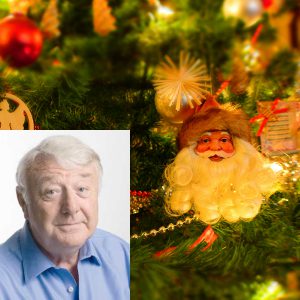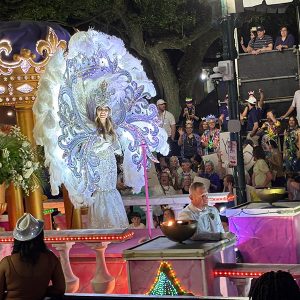Our patron John Carter looks back on Christmas trips of the past and the origins of Santa Claus himself
We were talking, in the coffee shop, about Christmas breaks, and weighing up the pros and cons of celebrating in the bosom of the family or going off to where somebody else would do the cooking and entertaining.
Tom said the best decision he ever made was to clear off for Christmas, leaving children and grandchildren to endure what he called “the havoc of tinsel and tat”. But he’s a miserable old duffer at the best of times, so his view doesn’t really count.
We recalled the day trips that were once offered in the run up to Christmas, when you could take the kids on a plane to visit Santa Claus in Lapland. I think they cost about £200 back then. Apparently, it is still possible to get such flights, but at around £700 a pop, they’re out of my price range.
I sampled one, either for the Holiday programme, or Wish You Were Here…? – probably the former. The organisation was excellent and the value for money quite obvious. But the staff at ‘Santa’s Village’ encountered an unforeseen problem. At the outset, the extensive buffet lunch offered venison, but when the children learned that venison was dead reindeer, they refused to eat it, believing it might be Rudolph himself! Chicken had to be substituted.

Encounters with a foreign Father Christmas can also involve similar traumas for unsuspecting children. I have personal knowledge of this, having decided, long years ago to take my wife, two very young daughters, and baby son to Norway for the festival. We flew to Bergen, then took the train up and across the Hardanger Plateau, whose resorts I knew from previous skiing trips. Not ‘queuing for a ski-lift, then sliding down a hill in order to join the queue for the ski-lift again’ skiing, but the cross-country sort which is far more enjoyable. But I digress. Sorry.
We stayed at a very smart hotel in Geilo, with loads of other families, and had a whale of a time. The problem arose when the hotel staff opened up large doors at the front of the building, scattering snow on the floor of the lobby so Father Christmas could drive in. Which he did, in a sleigh drawn by real reindeer. It was a truly magical moment, enjoyed as much by the adults as the children.
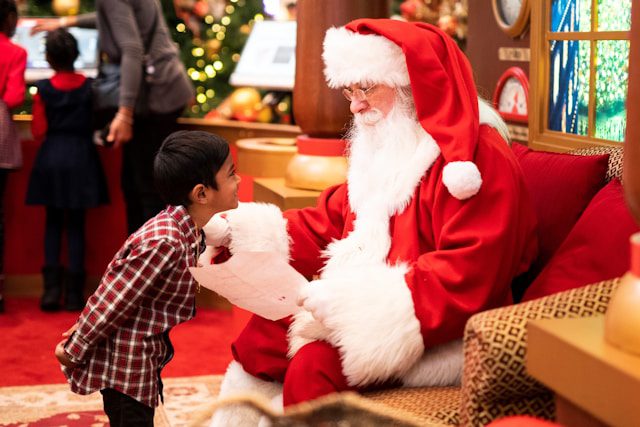
The kids (including our two girls) crowded round the sleigh and were given small gifts. Father Christmas chatted to them and listened as they told him exactly what they wanted him to deliver on the 25th.
And that was the problem. Our girls ran to us in tears. BECAUSE FATHER CHRISTMAS DIDN’T SPEAK ENGLISH!!!
How would he know what they wanted? How would he read their letters which had been ‘posted’ up the chimney back home? How would he know where they lived? My wife came up with the answer, explaining that, being a magical person, Father Christmas could speak every single language in the whole wide world. So, naturally, he’d spoken the language of the country he happened to be in. The crisis over, we were able to enjoy an unforgettable holiday.
Incidentally, if, like me, you have grandchildren in the ‘doubting’ age bracket – by which I mean old enough to start questioning whether Santa Claus really exists – then I might be able to help by mentioning that he certainly does. Or, at any rate, certainly did.
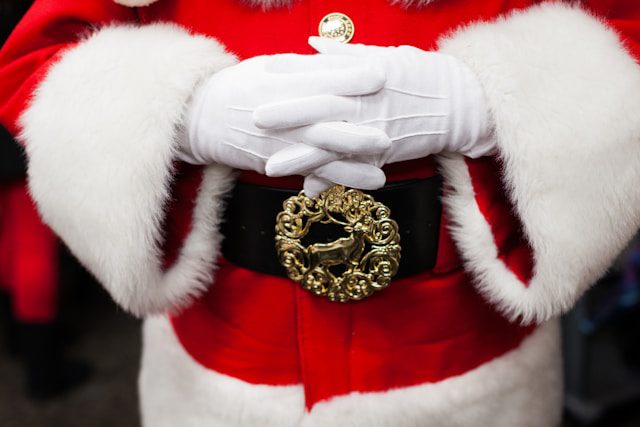
Nicolas was Bishop of Myra, in Turkey. He died on December 6th, 343 (yes, it was a long time ago) and was venerated for doing lots of good and holy stuff during his lifetime. He was made a Saint (Saint Nicolas, easily becomes Santa Claus if you say it swiftly) and is patron saint of all manner of folk – travellers, sailors, pawnbrokers (I’ll come back to them in a moment), and, of course, children.
One of his good deeds was to sneak out at dead of night and throw small bags of gold into the gardens of poor families, so the daughters would have a dowry, thus enabling them to get married instead of being sold into slavery. The tale of a poor chap who had three daughters, and so received three bags of gold, is frequently told.
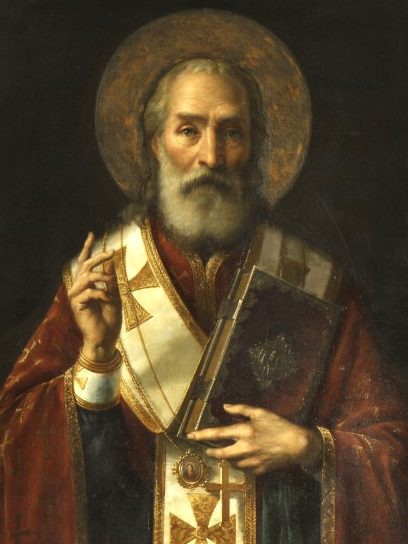
Some versions of the story say he threw gold balls, rather than gold bags – which is why a traditional pawnbroker’s sign consists of three ‘gold’ (actually brass) balls. A piece of useless information, I agree, but you never know, it might come up one quiz night at the Dog and Duck or the golf club.
His tomb, in Turkey, drew many pilgrims, but in 1087 (another long time ago, though not as long ago as 343) a bunch of Italian sailors took it upon themselves to pinch his bones, conceal them in a barrel of pork and smuggle them to Italy, where they were installed in what is now the Basilica di San Nicola.
Last time I visited the tomb, it was surrounded by a lot of old ladies in headscarves, praying loudly in Russian. As Nicolas happens to be Patron Saint of Russia as well as of all those other categories, they were on a pilgrimage from Moscow.
A pair of young priests with fledgling beards hovered around like nervous shepherds while their boss – a somewhat oily cleric sporting an extremely expensive suit and massive whiskers – concentrated on his mobile phone.
I didn’t like the look of him, and was not at all surprised when our tour guide – who’d had a long chat with her opposite number escorting the Russians – told me he was an important priest in Moscow.
Anyway, I hope my seasonal ramblings have interested, or even amused, you. And if you really want to convince a doubting child I recommend you search on your computer for ‘Yes Virginia, there is a Santa Claus’. It is the editorial which appeared in the New York Sun newspaper in 1897. Well worth reading, even if you don’t have doubting children to deal with.
